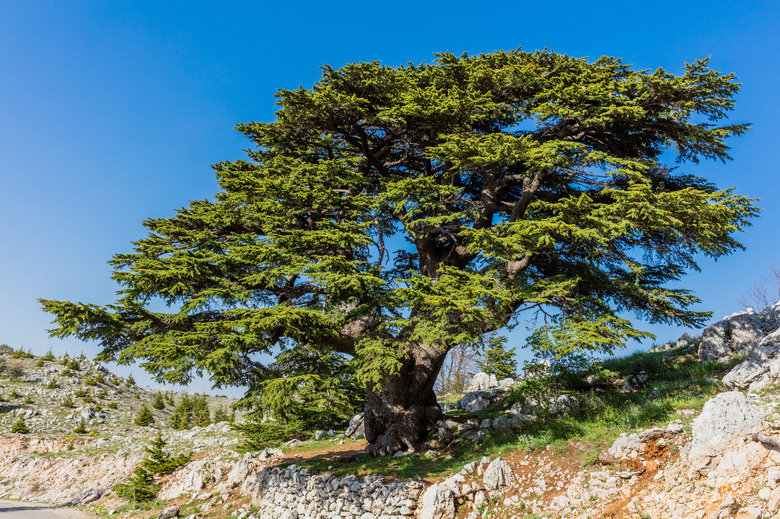What To Do For A Cedar Tree Turning Brown
We may receive a commission on purchases made from links.
Before decide what to do for a cedar tree turning brown, it's important to know what's normal browning and what isn't. Even the oldest and tallest cedars (Cedrus spp.) in the forest do a bit of browning. The age of a cedar is also a factor. Young, recently planted cedars will show stress, manifested as browning, if you move them around.
Cedars of any age can brown if you don't irrigate them properly. Prune dead foliage during fall when the tree is dormant. Learn how to detect and prevent destructive insects that can cause your cedar to turn brown.
Normal Browning and Needle Drop
Normal Browning and Needle Drop
You can expect some needles to turn brown and drop in spring or fall. This is somewhat normal during this time of year. You may also notice some dead needles on the cedar tree. Cedars do this naturally when they're young and during the second or third growing season. However, if you notice needles turning brown during the summer or winter, your tree could be infested with spider mites.
Improper Watering Practices
Improper Watering Practices
Too much or too little water puts your cedars at risk for browning. Because they're shallow rooted, cedars can become stressed in drought conditions. Watering regularly in hot, dry conditions helps your cedar tree stay healthy.
Overwatering or poor drainage that causes water to pool near your cedars can cause the roots to die. Too much water keeps oxygen from reaching the roots. Avoid watering your cedars too often if they're planted on heavy or poorly draining soil. Improve drainage in the area if water tends to pool there.
Damage From Weevils
Damage From Weevils
Examine the tree closely to identify the areas that are turning brown. If the branch tips and twigs are brown or dead, the culprit could be weevils. The deodar weevil, in particular, is an enemy of deodar (Cedrus deodara, USDA zones 7-9), Atlas (Cedrus atlantica, zones 6-9) and Lebanon (Cedrus libani, zones 5-7) cedars.
Do a close inspection of the bark. This is where weevils lay their eggs, typically in mid to late June. Look for white grublike worms burrowing into the wood. If you notice this, your tree has a weevil problem.
Damage From Spider Mites
Damage From Spider Mites
Spider mites typically attack in the summer. Infestations cause cedar foliage to look bronze. Look on the underside of leaves. If you see tiny mites or white webbing, spider mites are on the attack. For further confirmation, take a piece of white paper and hold it underneath a browning branch. Shake the branch and look for slow-moving creatures that are as small as periods.
Purchase a miticide spray from your local plant nursery to eradicate the infestation. Consult the product label to make sure it's safe to use on cedars. Avoid using neem oil, because cedars tend to show sensitivity to oils and may be damaged by their use.
Cedar Apple Rust Fungus
Cedar Apple Rust Fungus
Cedar apple rust fungus disease can attack cedars planted near apple trees or members of the apple family, including hawthorn (Crataegus spp.), Juneberry (Amelanchier spp.) and mountain ash (Sorbus spp.). These trees serve as "alternate hosts" for a fungus to develop and thrive. Examine the tree and look for gall-like growths on the branches for identification purposes. Cut out the galls. Then spray the cedar with a ferbam fungicide application to prevent new infestations.
Extent of Damage
Extent of Damage
If you have eliminated biotic organisms, such as mites or weevils, and the majority of the tree is brown, your cedar may be severely damaged. If most of the foliage is dead, the tree may not be worth saving. Take a picture of the tree and show it to a professional at your nearest nursery or cooperative extension office. An extension employee will confirm whether the tree can be saved.
